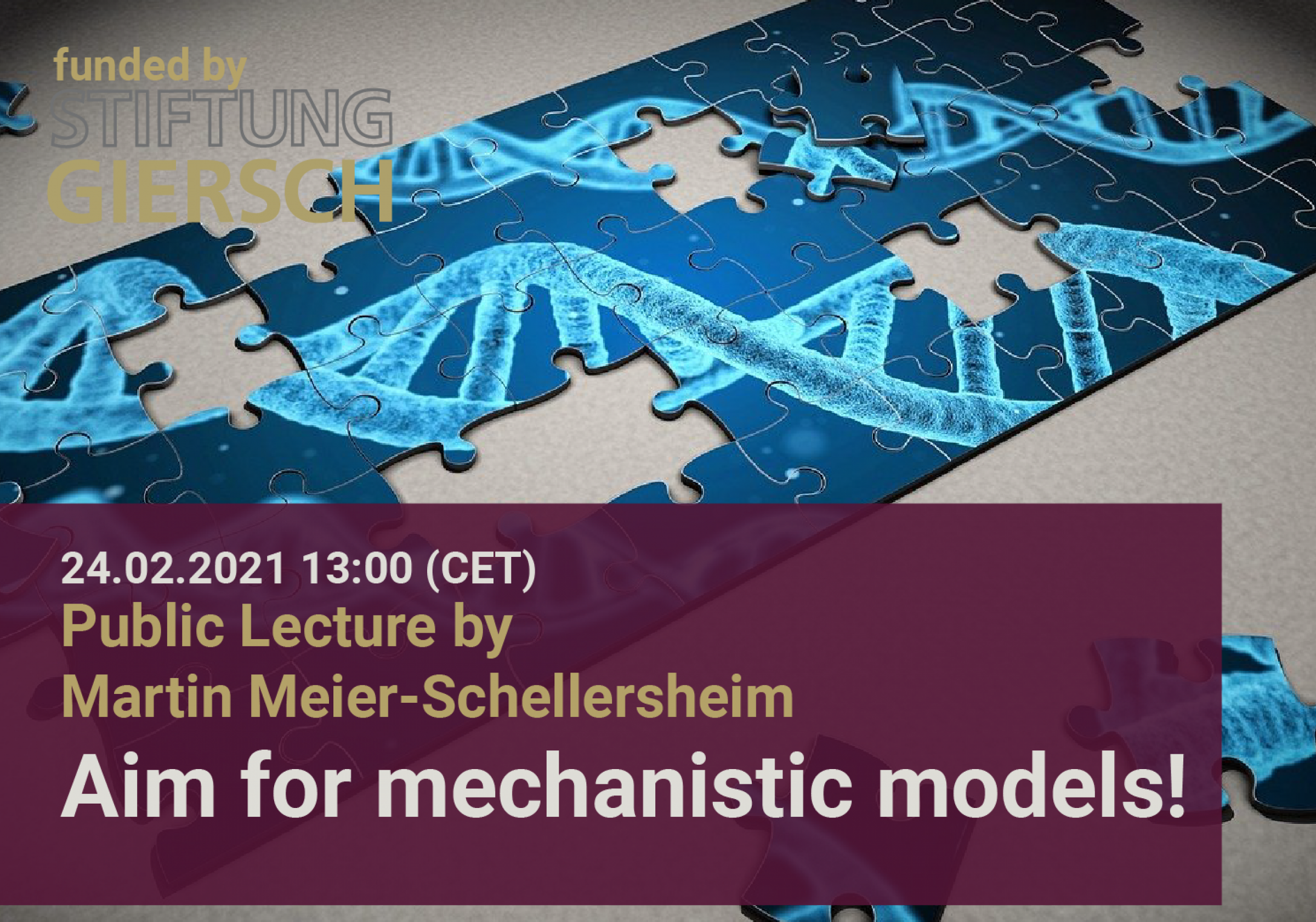February 24, 2021 1:00 PM / Everyone
Aim for mechanistic models!
by Martin Meier-Schellersheim, National Institute of Allergy and Infectious Diseases (NIAID), Bethesda, USA

Venue: online
Theoretical modeling in cell biology has to strike a balance between finding parsimonious, manageable models with not too many parameters or assumptions that are not directly accessible to experimentation on one hand and, on the other hand, not suggesting models that are regarded as too simplistic and biologically unrealistic. During the search for such balance, it is frequently overlooked that concise models implicitly make many assumptions without actually exposing them to scrutiny. In my talk, I will illustrate this issue using computational models of simple signaling pathways and show how detailed mechanistic models of intracellular reaction networks can be explored efficiently. We combine both approaches to investigate the structure and molecular mechanisms of energy-converting membrane protein complexes. CryoET of Mgm1 on lipid membranes indicates how this mechano-chemical GTPase may shape the mitochondrial cristae. CryoET of mitochondrial mem-branes indicates that the respiratory chain supercomplex is essentially conserved from plants to mammals. Single-particle cryoEM of complex I from Yarrowia lipolytica reveals bound substrates and lipids at 3.2 Å resolution. While the chloroplast ATP synthase is monomeric, all mitochondrial ATP synthases form dimers that assemble into long rows that induce local membrane curvature. Single-particle cryoEM of the chloroplast ATP synthase shows how the complex is turned off at night to prevent unproductive ATP hydrolysis. The 2.7 Å map of a mitochondrial ATP synthase dimer resolves 13 different rotary substates, providing unexpected new insights into the universal mechanism of ATP synthesis by rotary catalysis that drives most cellular processes.
The Speaker
Dr. Meier-Schellersheim obtained a master’s degree in physics in 1997 and a Ph.D. in 2001 from the University of Hamburg, Germany. His research focuses on building a bridge between experimental and computational cell biology through the development and application of modeling tools that combine accessible graphical interfaces with the capability to perform spatially and temporally highly resolved simulations, even for models of complex cellular signaling processes.
The Lecture Series:
In the line of the Giersch – Summer School & International Conference on “Theoretical and Experimental Quantitative Cell Biology”. Interested people from all over the world are invited to join the series of public lectures live broadcasted from the 22. of February to the 4th of March 2021. Designated experts give insights in their research work and visions on future developments. The public lectures are part of the Giersch Summer School & Conference funded by the Giersch Foundation and FIAS and the scientific networks LOEWE DynaMem, LOEWE CMMS, ‘Xidian-FIAS Joint Research Center’ (XF-JRC), the Rhein-Main Universities, and the graduate program GRADE – IQbio.